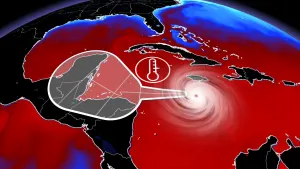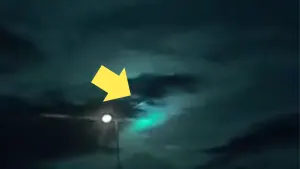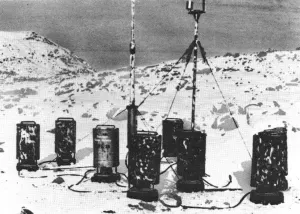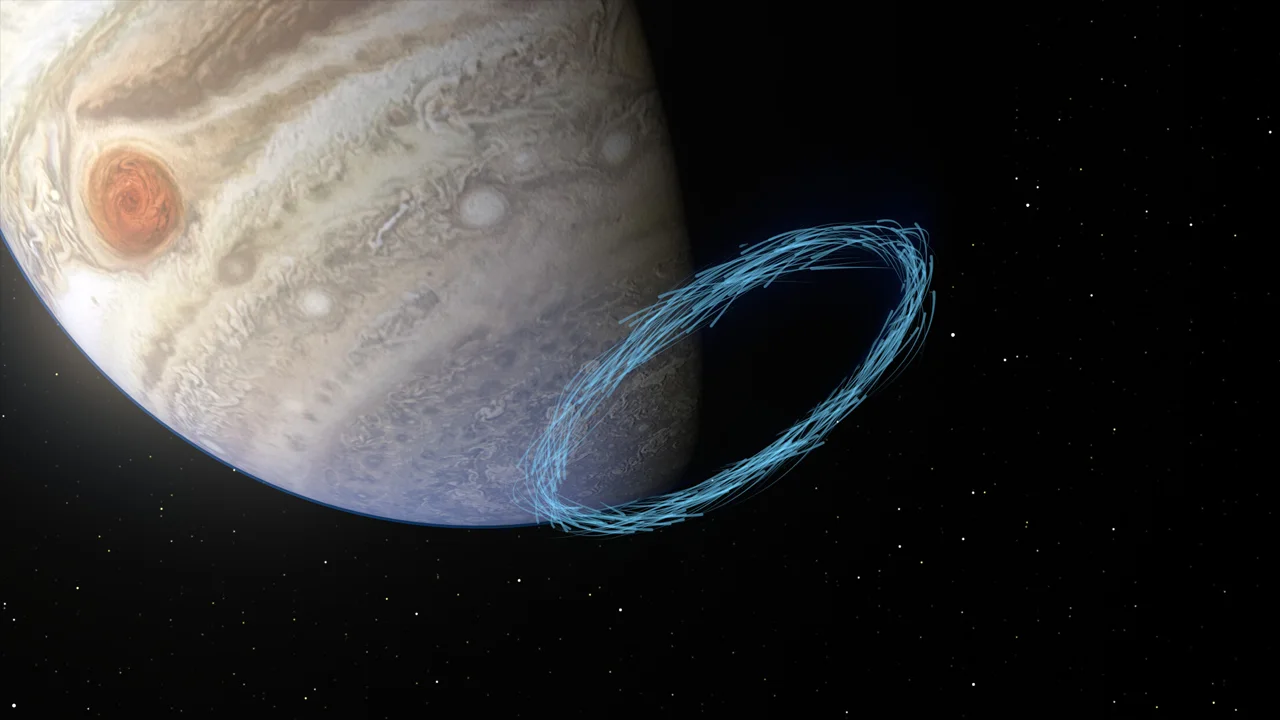
Jupiter's atmosphere harbours a 'unique meteorological beast'
A comet impact in the 1990s is now providing insights into the incredibly powerful winds blowing above Jupiter's cloud tops.
Nearly three decades ago, a 2-kilometre-wide comet broke apart and plunged into the cloud layers of Jupiter. In just the past few years, astronomers have used the aftermath of that colossal impact to capture the first measurements of the planet's stratosphere. In doing so, they have revealed what they called a "unique meteorological beast in our Solar System."
When the shattered remnants of Comet Shoemaker-Levy 9 slammed into Jupiter in July of 1994, it was a fantastic sight. Images of the multiple impact sites were awe-inspiring, and from a safe distance, the event offered us a glimpse at what a comet impact really looks like. The event also provided a scientific boon that has only been realized now, in 2021.
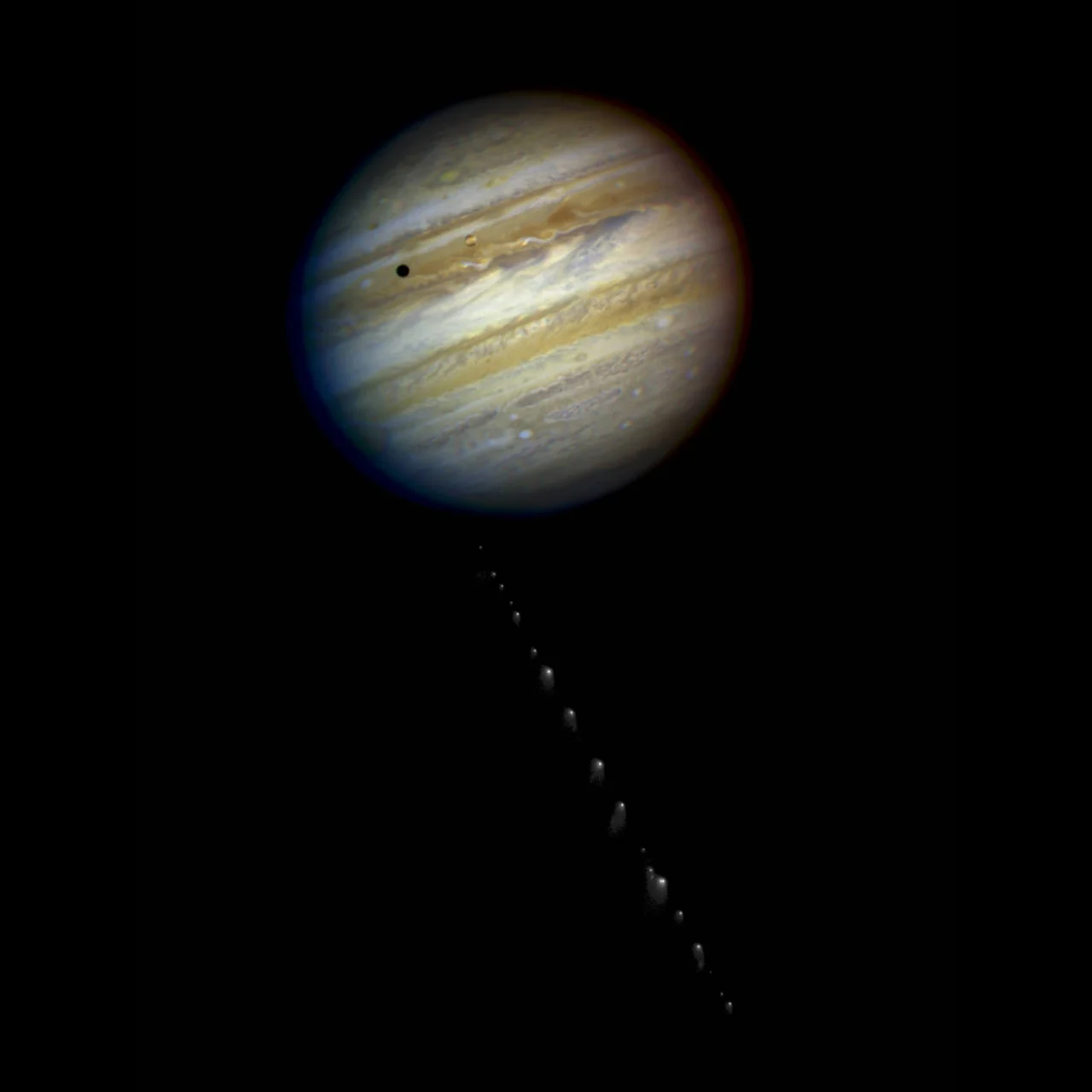
In this composite image, fragments of comet Shoemaker-Levy 9 plunge towards Jupiter. The comet was imaged on May 17, 1994, with Jupiter imaged separately the day after, on May 18, 1994, both by the Hubble Space Telescope. Io and its shadow are visible as well. Credit: NASA, ESA, H. Weaver and E. Smith (STScI) and J. Trauger and R. Evans (NASA's Jet Propulsion Laboratory)
Although the bruising to Jupiter's cloud tops by Shoemaker-Levy 9 disappeared pretty quick, there was a long-lasting effect from this encounter. The pieces of the comet added chemical molecules to Jupiter's atmosphere. One, in particular, hydrogen cyanide, is apparently common for comets but doesn't normally exist on Jupiter.
Astronomers using radio telescopes such as the Atacama Large Millimeter/submillimeter Array (ALMA), located in northern Chile, have already detected the chemical fingerprint of hydrogen cyanide in comets like Comet ISON. Turning ALMA towards Jupiter back in 2017, a team led by Thibault Cavalié of the Laboratoire d'Astrophysique de Bordeaux in France was able to detect the hydrogen cyanide left behind by Shoemaker-Levy 9. They used it to do something no one had done before. They tracked the wind speeds in Jupiter's stratosphere.
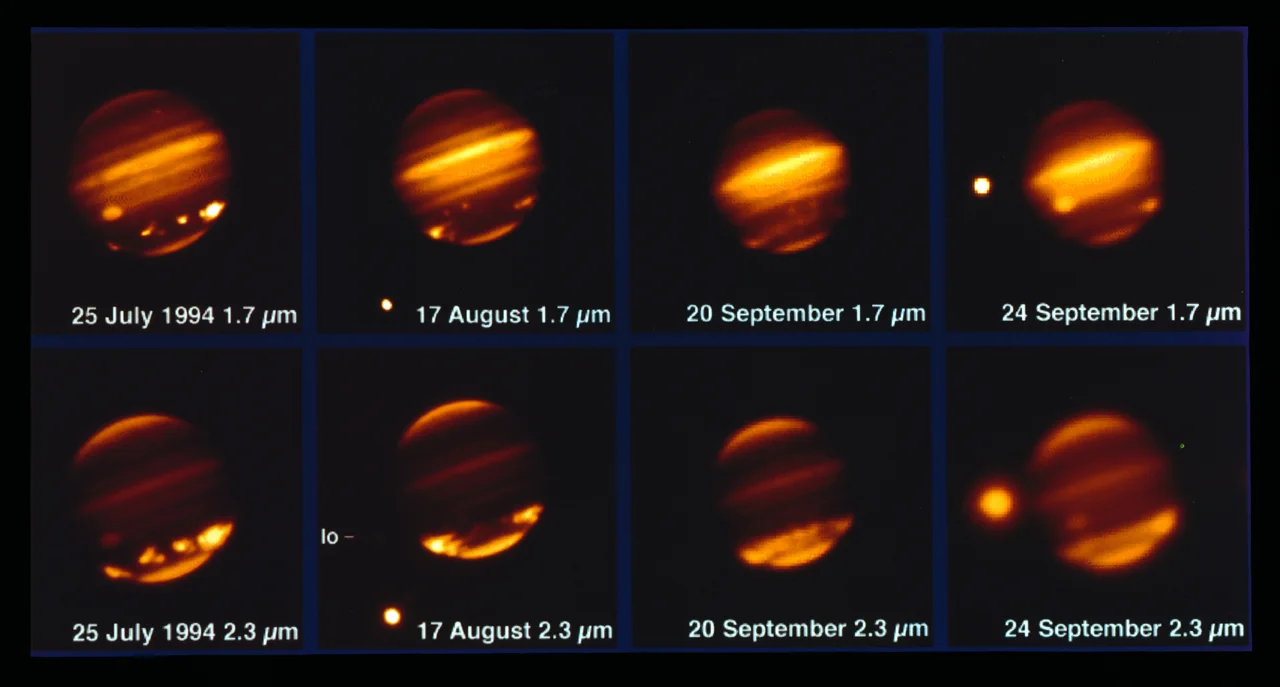
This series of images captures the impact zones of comet Shoemaker-Levy 9 in 1994. Credit: ESO
Similar to Earth's atmosphere, Jupiter's atmosphere is divided into different layers. On both planets, the clouds we see are primarily located in the troposphere. Above that is a layer that is nearly devoid of clouds, known as the stratosphere. The lack of clouds makes it very difficult to directly measure wind speeds in the stratosphere. Here on Earth, we can get around the difficulty by simply launching a weather balloon. On Jupiter, though, we would need to sacrifice a billion-dollar spacecraft for just a brief glimpse at what stratospheric speeds are like.
Since hydrogen cyanide apparently does not break down in Jupiter's upper atmosphere, this presented a unique opportunity. As the molecules absorb heat and radiation, they emit various frequencies of light to get rid of that excess energy. Some of these frequencies are in the radio part of the spectrum. With ALMA already 'trained' to find the molecule's radio fingerprint, astronomers could use the chemical's movement through the air as a tracer.
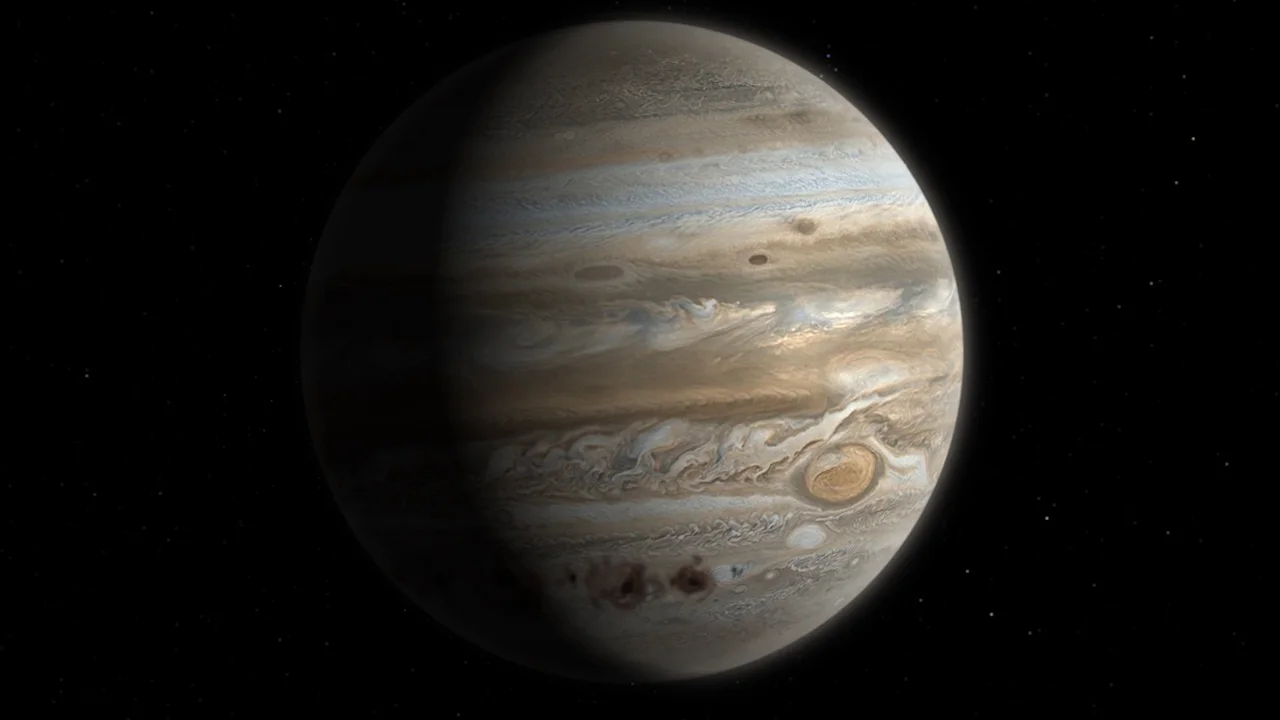
This artist impression shows impact scars in Jupiter's clouds due to Shoemaker-Levy 9. Credit: ESO/M. Kornmesser/NASA/ESA
They discovered wind speeds of around 600 kilometres per hour in the stratosphere near Jupiter's equator. Wind speeds in Jupiter's polar jets — the concentrated 'ribbons' of wind around the north and south poles, similar to the jet streams here on Earth — were found to be substantially faster.
"The most spectacular result is the presence of strong jets, with speeds of up to 400 metres per second, which are located under the aurorae near the poles," Cavalié said in an ESO press release.
That's roughly equal to 1,450 kilometres an hour — over three times faster than the strongest wind speeds ever measured on Earth. The team's results appear in a new study, published in the journal Astronomy and Astrophysics on Thursday.
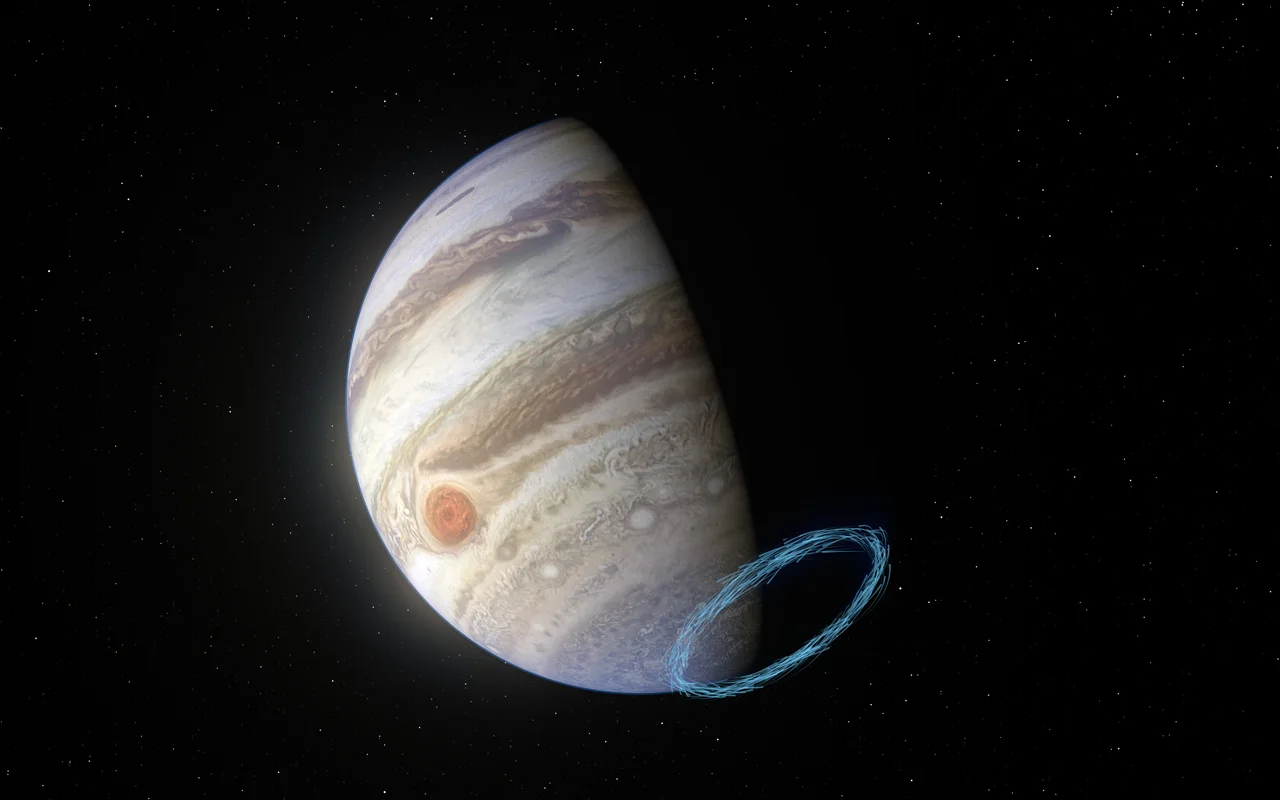
This artist's impression shows the stratospheric jets blowing around Jupiter's south polar region. Credit: ESO/L. Calçada & NASA/JPL-Caltech/SwRI/MSSS
The key to this was using ALMA to detect Doppler shifts in the radio frequencies emitted by the molecules. Doppler shifts cause a radio wave's frequency to increase if the wave is travelling towards your detector and decrease if the wave is travelling away from your detector.
"By measuring this shift, we were able to deduce the speed of the winds much like one could deduce the speed of a passing train by the change in the frequency of the train whistle," Vincent Hue, a co-author of the study from the Southwest Research Institute (SwRI), told the ESO.
"Our detection indicates that these jets could behave like a giant vortex with a diameter of up to four times that of Earth, and some 900 kilometres in height," co-author Bilal Benmahi, who is also at the Laboratoire d'Astrophysique de Bordeaux, said in the statement.
"A vortex of this size would be a unique meteorological beast in our Solar System," Cavalié added.
Studies like this provide better insights into the structure and properties of Jupiter's atmosphere. Surprises found during this type of research — such as discovering that strong wind speeds 'survive' to much deeper in Jupiter's atmosphere than previously thought — help advance planetary science and our understanding of how massive planets like Jupiter formed.







